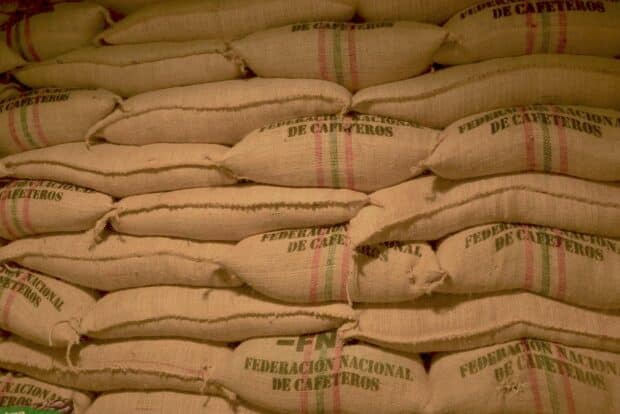[[{“value”:”
In 2024/2025, Colombian coffee production is anticipated to reach the equivalent of 12.4 million 60-kilo bags of green coffee, a 1.6% increase from the previous year.
Representing more than 40% of the export market share, the United States remains a key trading partner to Colombia, which is also working to satisfy the new EU deforestation-free requirements.
These and other issues are outlined in the new USDA Foreign Agriculture Service annual report on the Colombian coffee sector.
[Note: This is part of a series of stories that will explore USDA FAS annual coffee reports. The information agency typically delivers more than a dozen country-level reports on the coffee sector, each coming from different authors and field offices.]
Production
The FAS Bogotá post now predicts that Colombian coffee production for market year 2024/2025 will rise to 12.4 million bags, a 1.6% increase from the previous year, driven by favorable weather conditions and improved flowering.
Despite increased production, the post notes persistent production challenges, including reduced coffee tree renovation areas, young tree vulnerability to drought and coffee borer outbreaks in lower altitudes.
Domestic coffee prices are under pressure due to lower international prices and currency revaluation, but producers are focusing on high-quality specialty coffee to secure better market prices and combat higher production costs, the report states.
Crop Area and Farm Dynamics
Based on estimates provided by the Colombian national coffee growers federation Fedecafé, Colombia had 840,000 hectares of coffee planted by nearly 550,000 families in 2023, with 95% of those families cultivating less than 5 hectares each.
Those smallholder farmers accounted for more than 60% of the country’s total coffee production, according to the report.
Of the total coffee area, 682,972 hectares are young “technified” crops, 152,950 hectares are older technified crops, and 5,430 hectares are planted with traditional crops, according to the report. Rust-resistant varieties now make up 87% of the coffee area.
Domestic Consumption
In 2024/2025, Colombian coffee consumption is now forecast to rise by 1.6% to 2.3 million bags, driven by moderate economic growth and decreasing inflation.
Fedecafé promotes domestic consumption through the “Look for the Colombian Coffee Quality Triangle” campaign, while ensuring products with the “Café de Colombia” logo are 100% Colombian in origin.
Despite efforts to increase domestic coffee drinking, Colombia’s per capita coffee consumption remains relatively low compared to most coffee-producing countries, at 2.8 kilograms per year, with a preference for soluble and low-cost coffee mixes, according to the FAS analysis.
Trade
The FAS office projects that Colombian coffee exports for 2024/2025 will rise by 1.9% to 12.0 million bags due to a recovery in local production. Exports for 2023/2024 have been revised downward to 10.7 million bags due to tightening supplies.
According to the FAS sources, the United States remains the top export destination with over 40% market share, followed by the EU, Japan and Canada. Exports to China surged by 432% in early 2023/2024, while exports to the U.S. declined by 14%.
Coffee imports for 2024/2025 are forecast to grow by 10.7% to 1.9 million bags, with Brazil as the main supplier. Imports mainly cater to the demand for soluble and lower-quality coffees.
Policy
Fedecafe, representing Colombia’s coffee sector, manages programs under a 10-year government agreement that currently runs until 2026. The bulk of the programming is funded by a $0.06 per pound levy on producers via the National Coffee Fund.
The Coffee Income Compensation Mechanism (MECIC-2024), part of the Coffee Price Stabilization Fund, was established to support growers during low prices or high production costs, though the report notes that it hasn’t been activated yet due to current price levels.
Colombian coffee producers are enhancing traceability to comply with the EU’s deforestation-free product regulation (EUDR), which is crucial since the EU receives more than 20% of Colombia’s coffee exports.
Comments? Questions? News to share? Contact DCN’s editors here.
Related Posts
“}]]


